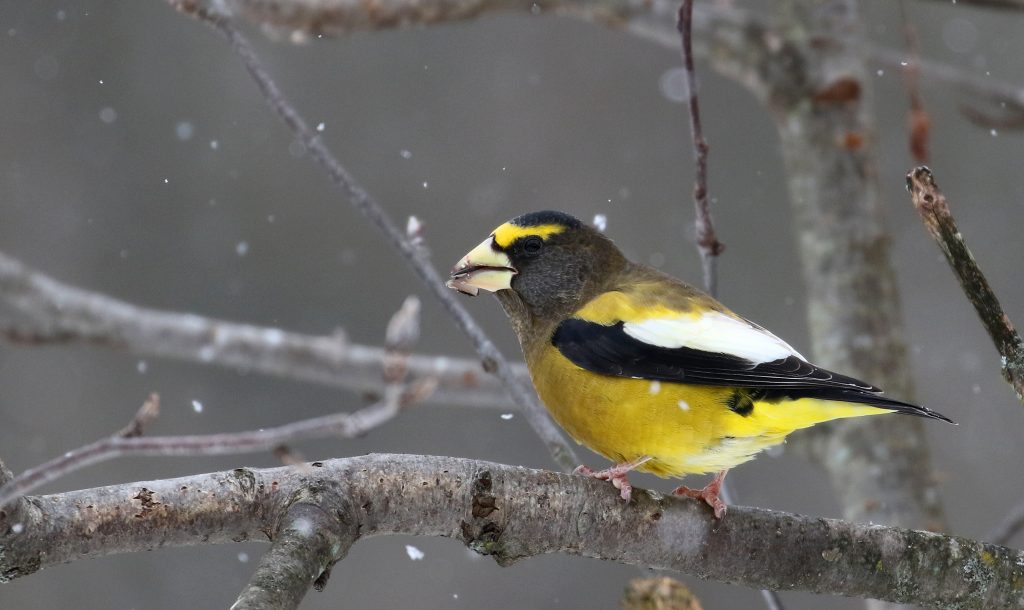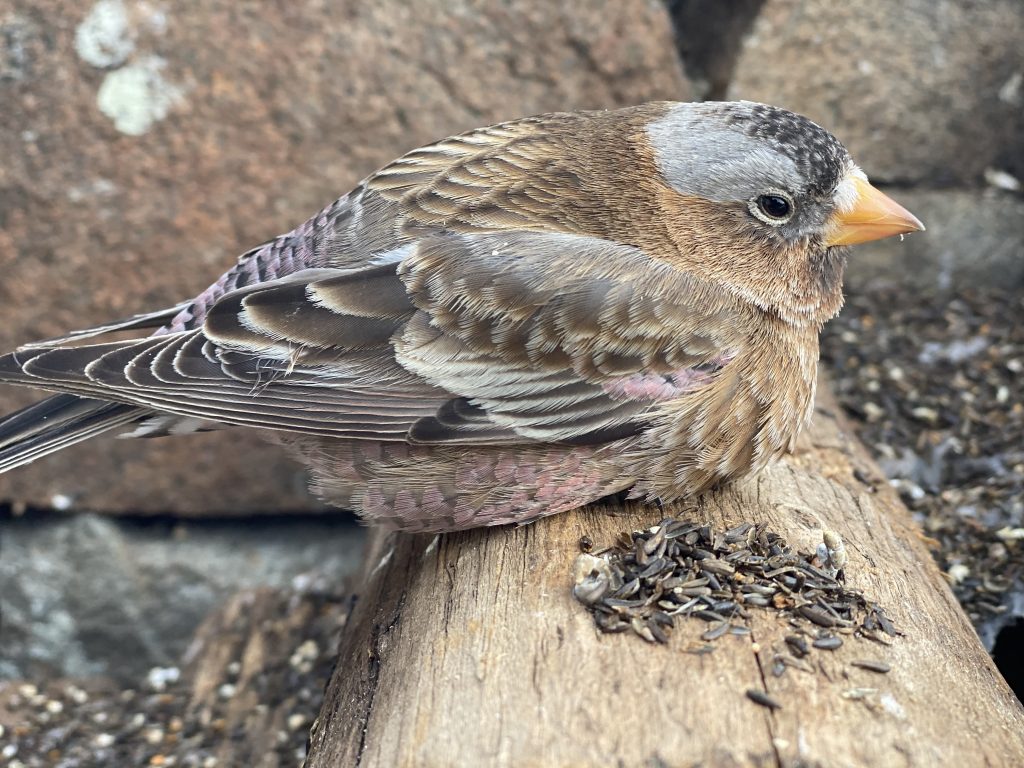Western Irruption Alert: Pine Grosbeaks, Cassin’s Finches, and Others Making Record Movements
By Caleb Centanni
While unusual western crossbills filter through the Northeast this fall, the pendulum for many finches is swinging westward. It’s becoming clear that this will be a winter for the irruption record books from the Plains to the Pacific. This seems to be the result of two primary irruptive patterns. In the late summer and early fall, pine seed failures in the Cascades and Rocky Mountain sent a slew of montane species on out-of-range wanderings. Then, in mid-October, boreal species began pouring south across the ranges and valleys. If you are west of the Mississippi, this is a winter to set up your feeders and search your local conifer patch for unexpected delights.

The signs of an interesting fall to come started to show in July and August. Low cone crops across the Interior West sent Red Crossbill Types 2 and 4 pouring out of their normal ranges, both onto the Pacific Coast and across the boreal forest to the Northeast. Type 3s made enormous southward movements along the coast in fall, culminating in a new United States high count of 1487 Red Crossbills in the Oregon Coast Range. Crossbill migration was accompanied by strong flights of Type 1 Evening Grosbeaks across the region and unprecedented coastal irruptions of pine-nut specialists Pygmy Nuthatches, Pinyon Jays, Steller’s Jays, Clark’s Nutcrackers, Mountain Chickadees, and the interior subspecies of White-breasted Nuthatches. Most of these irruptions have continued through November and into December.
Evening Grosbeaks (many Type 1) made a good showing in the south of their irruptive range starting in September (eBird).
Since boreal finches began arriving in mid-October, the headline species has been Pine Grosbeaks, which continue to move southwest in numbers not seen for more than a decade. Most recently, a Pine Grosbeak in North Texas was an apparent 7th state record, but only the 2nd in eBird. In the Pacific Northwest, irrupting birds from northern populations of the species nearly reached California, a movement only paralleled in recent history by the irruption of 2014-2015. Compared to that winter, the current density of Pine Grosbeaks seems higher from western Oregon to the Great Plains, suggesting that this could be a record-breaking winter for the species.
Pine Grosbeaks moved south in impressive numbers starting in mid-October, and have now reached Texas and southern Oregon (eBird).

Cassin’s Finches made small but overall typical movements in the early fall, followed by a few isolated but remarkable vagrancy events later. North Dakota got its 4th, 5th and 6th state records of the species, with one nearly reaching Minnesota. Alaska, where the species is a semi-regular vagrant, saw a significant incursion. A Cassin’s Finch on Gambel Island in October which nearly reached Asia is apparently the species’ longest-distance wandering on record.
Cassin’s Finches wandered far and wide starting in August, including one which almost reached Siberia (eBird).
Meanwhile, Common Redpolls have already reached southern Idaho and Colorado, indicating this could be the second best fall of the decade after the amazing irruption of 2021. Gray-crowned Rosy-Finches have also been moving in force, with unusual numbers on the Pacific Coast from Vancouver Island to California as well as vagrants extending across the Plains to Ontario and Wisconsin. Type 1 Evening Grosbeaks, Pine Siskins, and Bohemian Waxwings are also making good irruptive showings in the southward parts of their irruptive ranges.
Common Redpolls moved south in impressive numbers starting October, a movement second only to the irruption of 2021 in recent history (eBird).
It’s hard to think of an irruptive species that isn’t surprising us out west right now. This winter, expect strong numbers of both expected irruptive finches and unusual species throughout the west, especially in the southwest and Plains. In the east, there is unusually high potential for vagrant Cassin’s Finches and Gray-crowned Rosy-Finches. So check your mountain patches, fill your feeders, and don’t forget to record your crossbills and grosbeaks. If the trend holds, this will be a magical winter for finches in the west!

Pine Grosbeak Cover Photo Melissa Groo
FiRN is a nonprofit, and was granted 501c3 status in 2020. We are a co-lead on the Evening Grosbeak Road to Recovery Project, and have funded upwards of almost $8,000 to go towards research, conservation and education for finch projects in the last year plus. FiRN is committed to researching and protecting these birds and other threatened finch species like the Evening Grosbeak, Rosy-finches, and Hawaii’s finches the honeycreepers, and if you have been enjoying all the blogs and identifying of Evening Grosbeak and Red Crossbill call types (upwards of 20,000 recordings listened to), redpoll subspecies and green morph Pine Siskins FiRN has helped with over the years, please think about supporting our efforts and making a small donation at the donate link below.
Donate – FINCH RESEARCH NETWORK (finchnetwork.org)
Membership
To get our 4 membership newsletters for 2024, join here:
https://finchnetwork.org/product/membership
Shirt Link
We have a few long sleeves and hoodies left of Winter Finch Forecast and Rosy-Finches designs (a few grosbeak shirts left too): here: https://finchnetwork.org/shop
Feedercam
The Finch Research Network has a feedercam co-sponsored by Aspen Song Wild Bird Food, who is a member of Wild Bird Feeding Institute, and that will go live again in Caribou, Maine around November 5. https://www.youtube.com/@FinchResearchNetwork/streams
Please think about joining these Finch Research Network iNaturalist Projects:
Winter Finch Food Assessment Project/Become a Finch Forecaster: https://finchnetwork.org/the-finch-food-assessment-become-a-finch-forecaster
Red Crossbill North American Foraging Project: https://finchnetwork.org/crossbill-foraging-project
Evening Grosbeak North American Foraging Project: https://finchnetwork.org/evening-grosbeak-foraging-project
We can be found on FB and Insta @Finchmasters, and on FB also at Finches, Irruptions and Mast Crops

